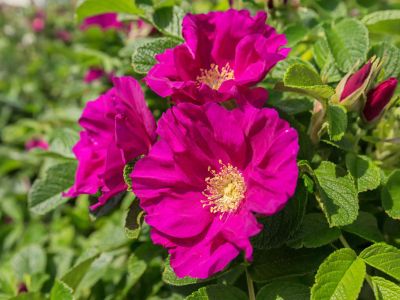What is a Rugosa Rose?
Also known as Japanese rose, rugosa rose bushes are beloved for their adaptability and floriferous habit. Quickly forming dense thickets of growth, these bushes are especially attractive to pollinators. Flowers, usually ranging in shades of white, pink, and red, bloom profusely early in the summer season and continue until the fall. Beyond flowering, these rose bushes create large quantities of brightly colored rose hips. These hips add considerable ornamental value from fall into winter. Maturing at roughly 6 feet (2 m.) in height, growing a rugosa rose is a popular choice for privacy as well as for the creation of valuable habitat for backyard wildlife.
Growing a Rugosa Rose
Rugosa rose bushes are among the easiest roses to grow. In fact, they may even become invasive in some locations. Before planting, check with your local agriculture extension regarding this rose. Most gardeners will find that growing a rugosa rose is relatively simple, as they are seldom affected by issues related to pests and/or disease. Even so, frequent monitoring for aphids, symptoms of black spot, and other common rose problems can help to keep bushes lush and healthy. Rugosa rose bushes can be grown in a variety of ways, including from seed. Those attempting to grow roses from seed should note that they will require a period of chilling in order for germination to occur. Propagation by cuttings from these plants are among the most common ways in which they are obtained. Rose transplants will adapt and thrive in a wide range of soils, including those which are sandy and have relatively low fertility. Beyond planting, rugosa rose care is minimal. Unlike hybrid roses, they will not need regular fertilization or pruning. Deadheading should also be avoided, as it will interfere with the production of rose hips. Since rugosa rose bushes can produce a considerable number of suckers, those wishing to control the size of plants may need to frequently remove new growth from the base of plants.
